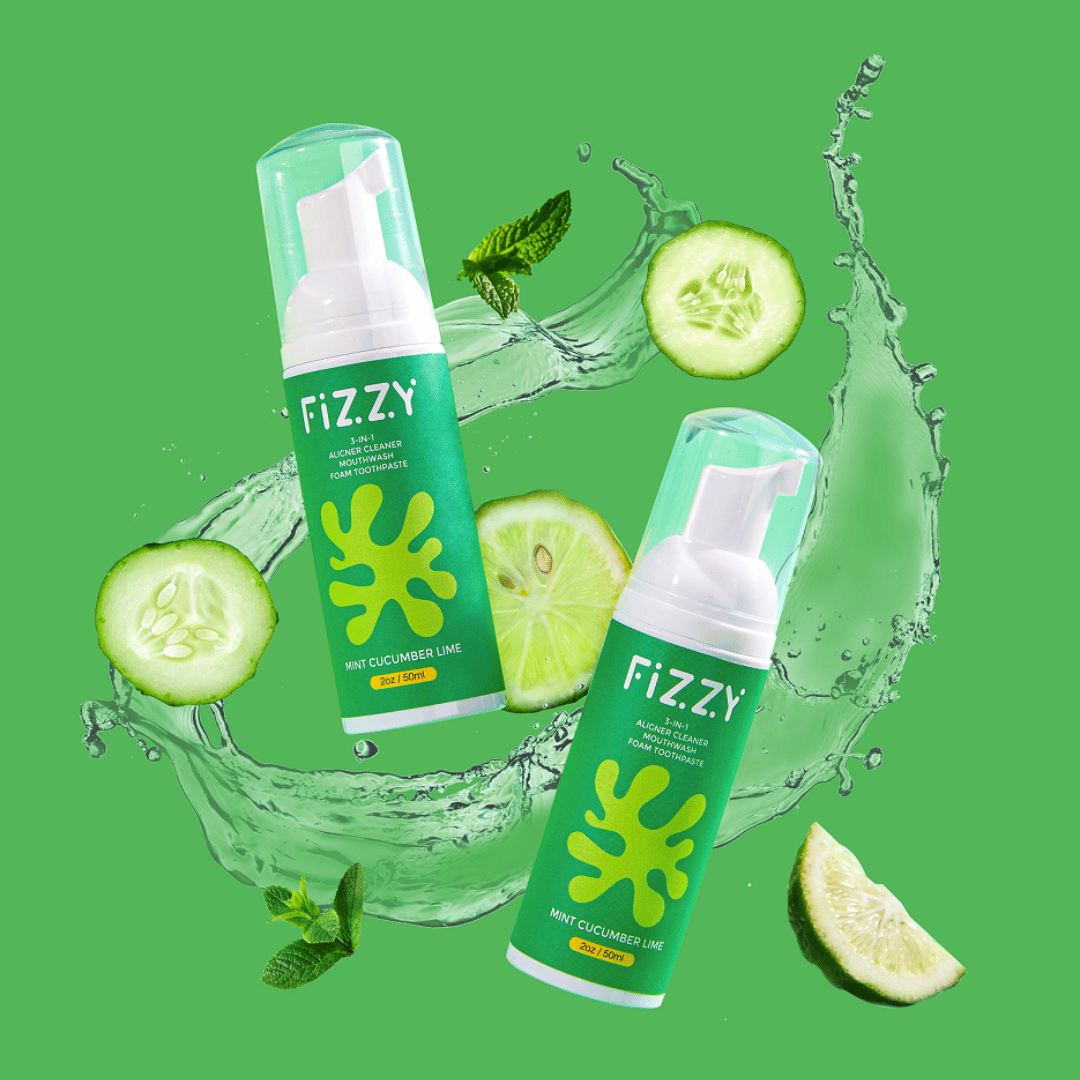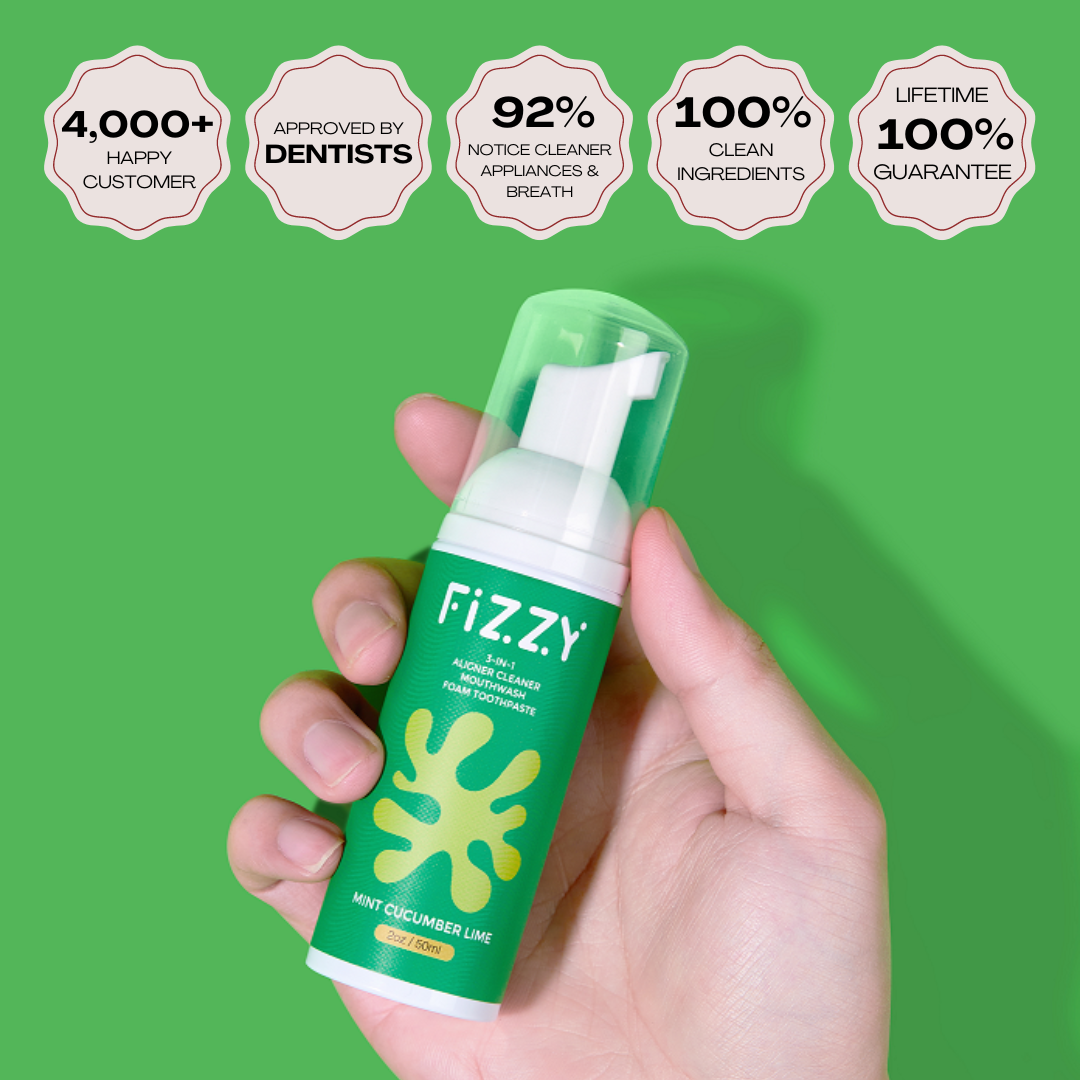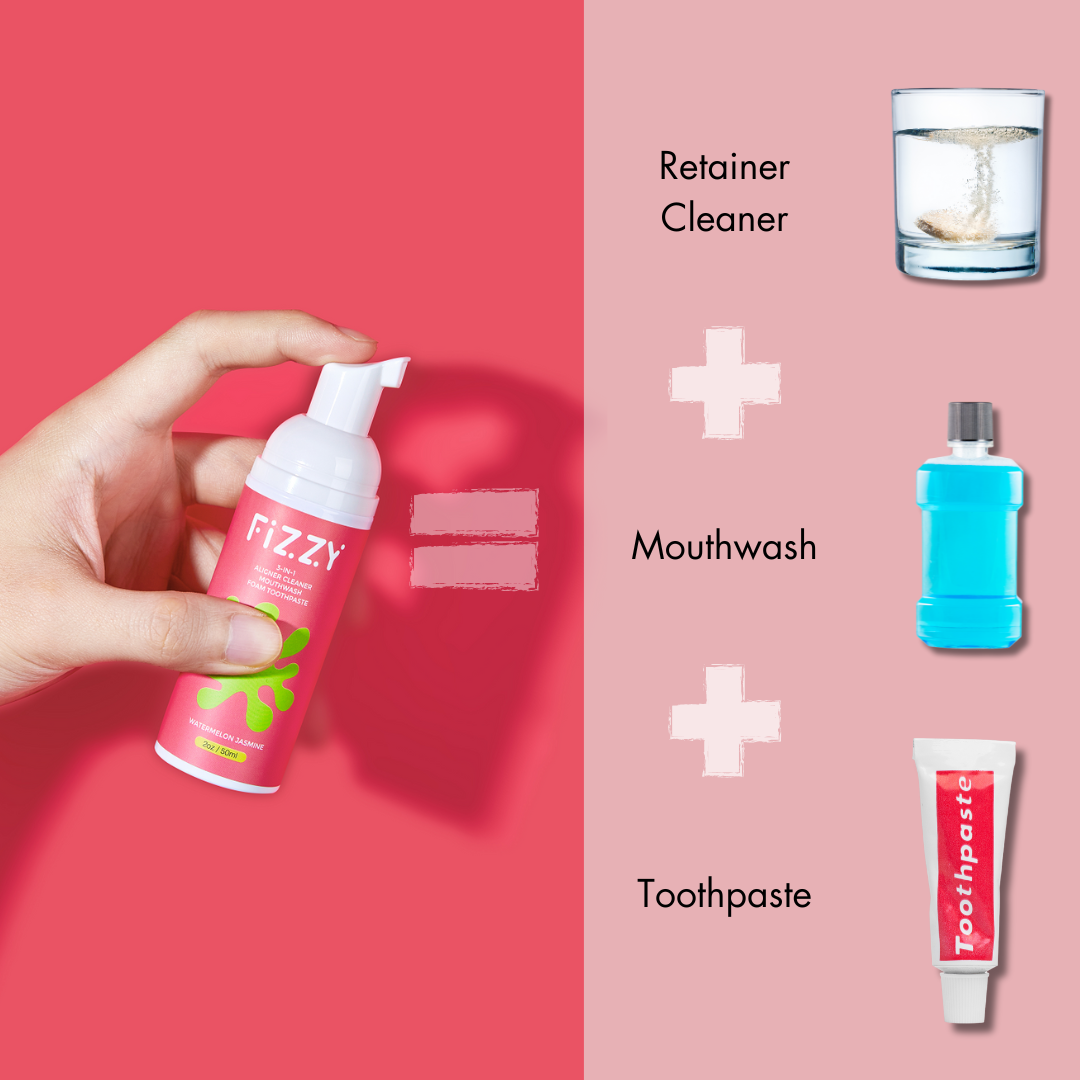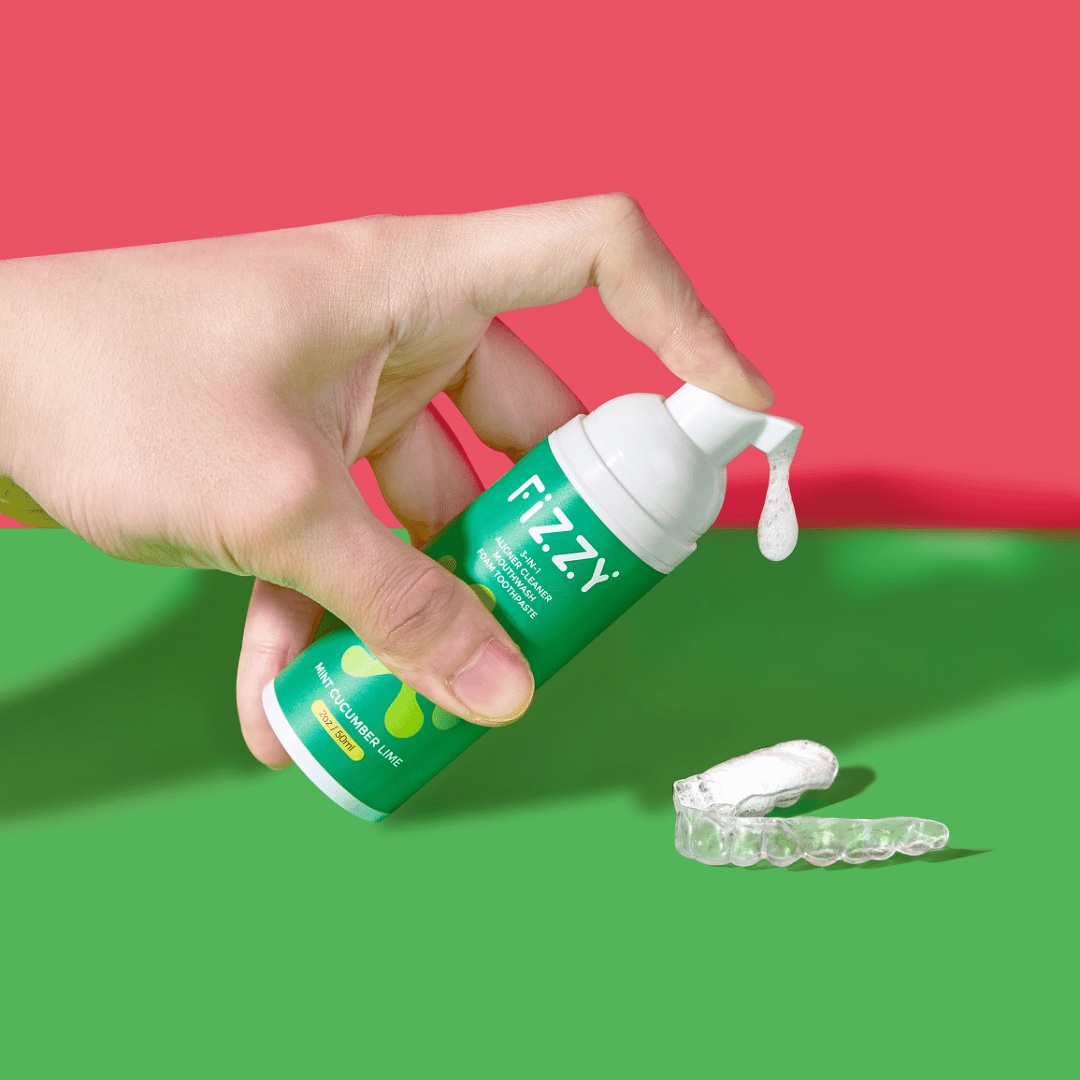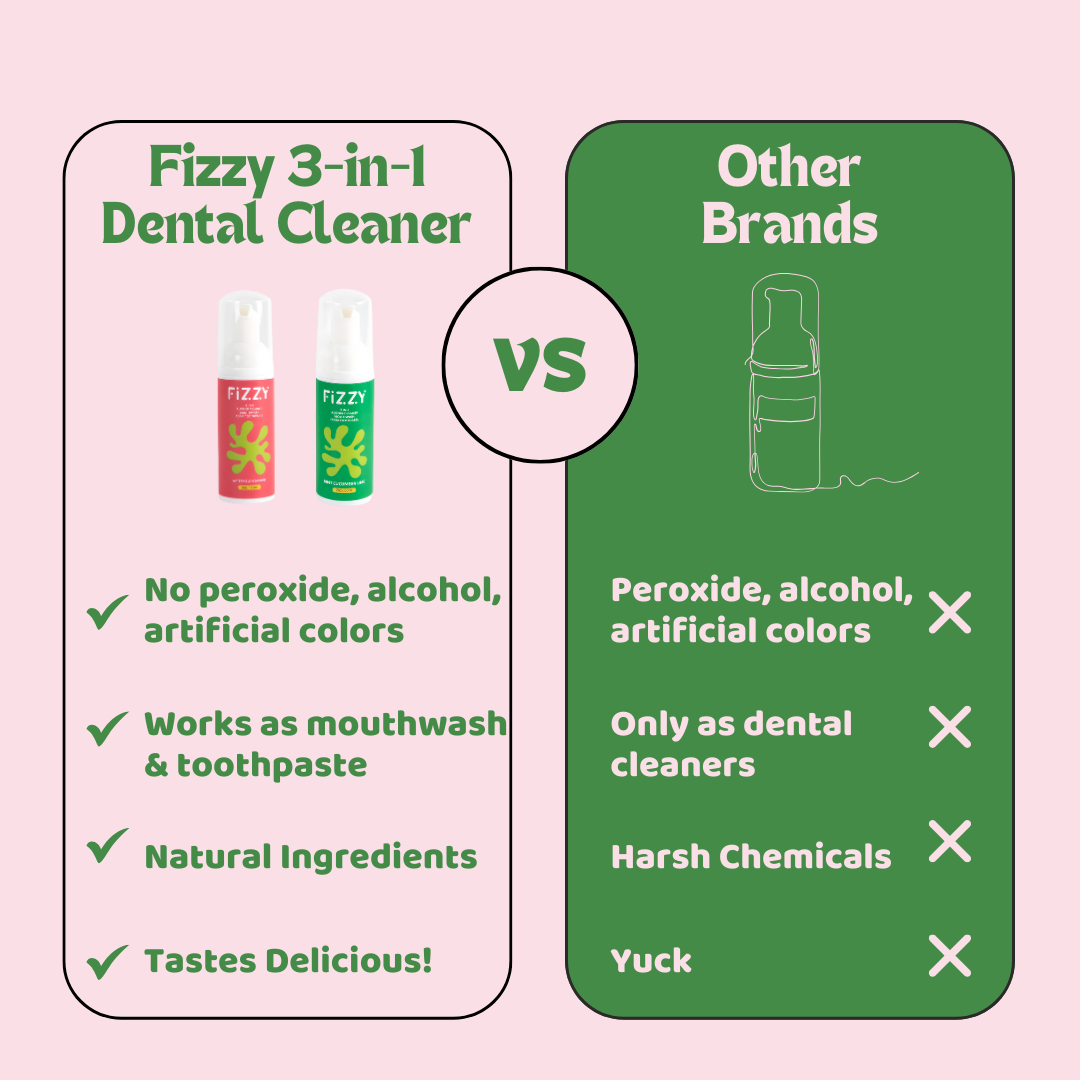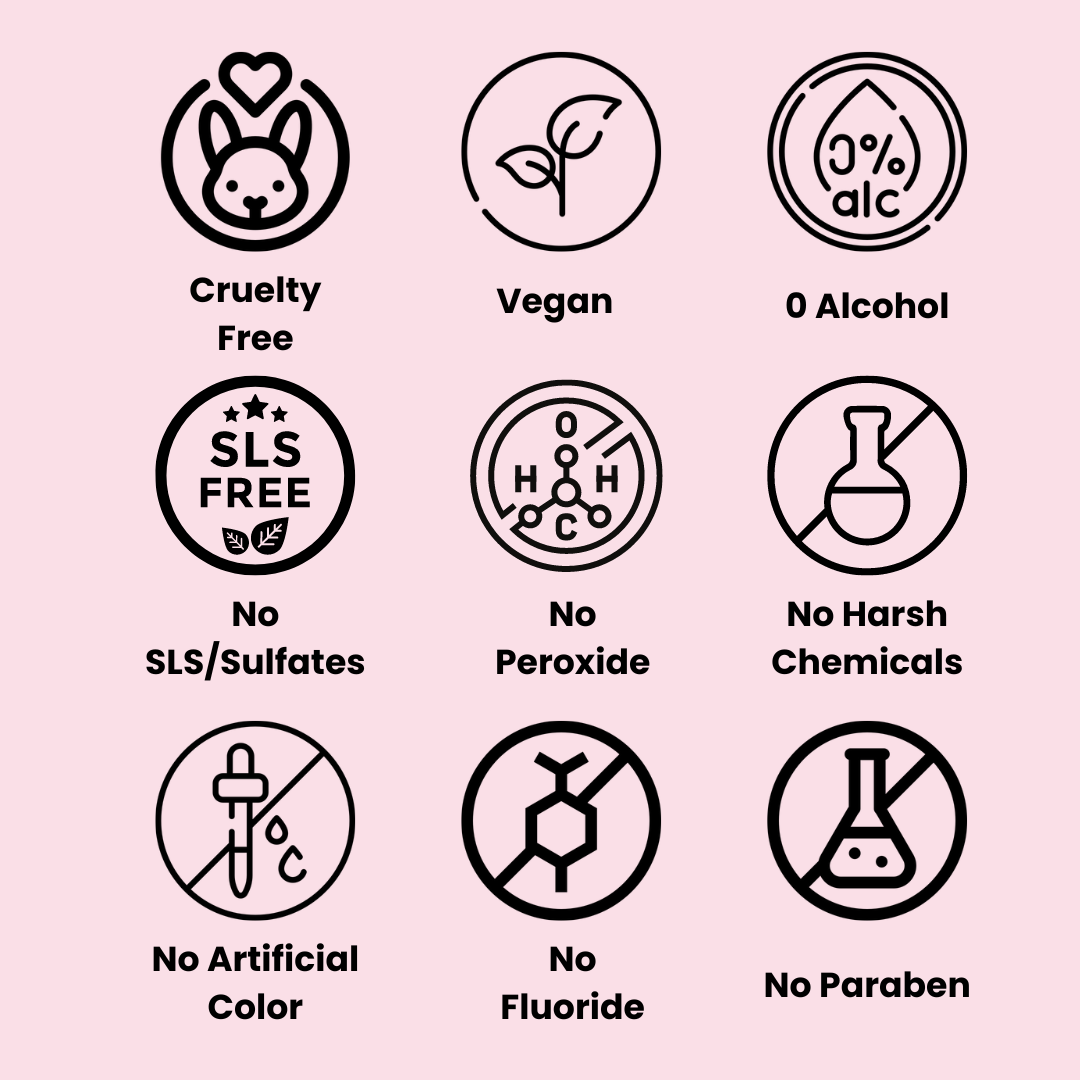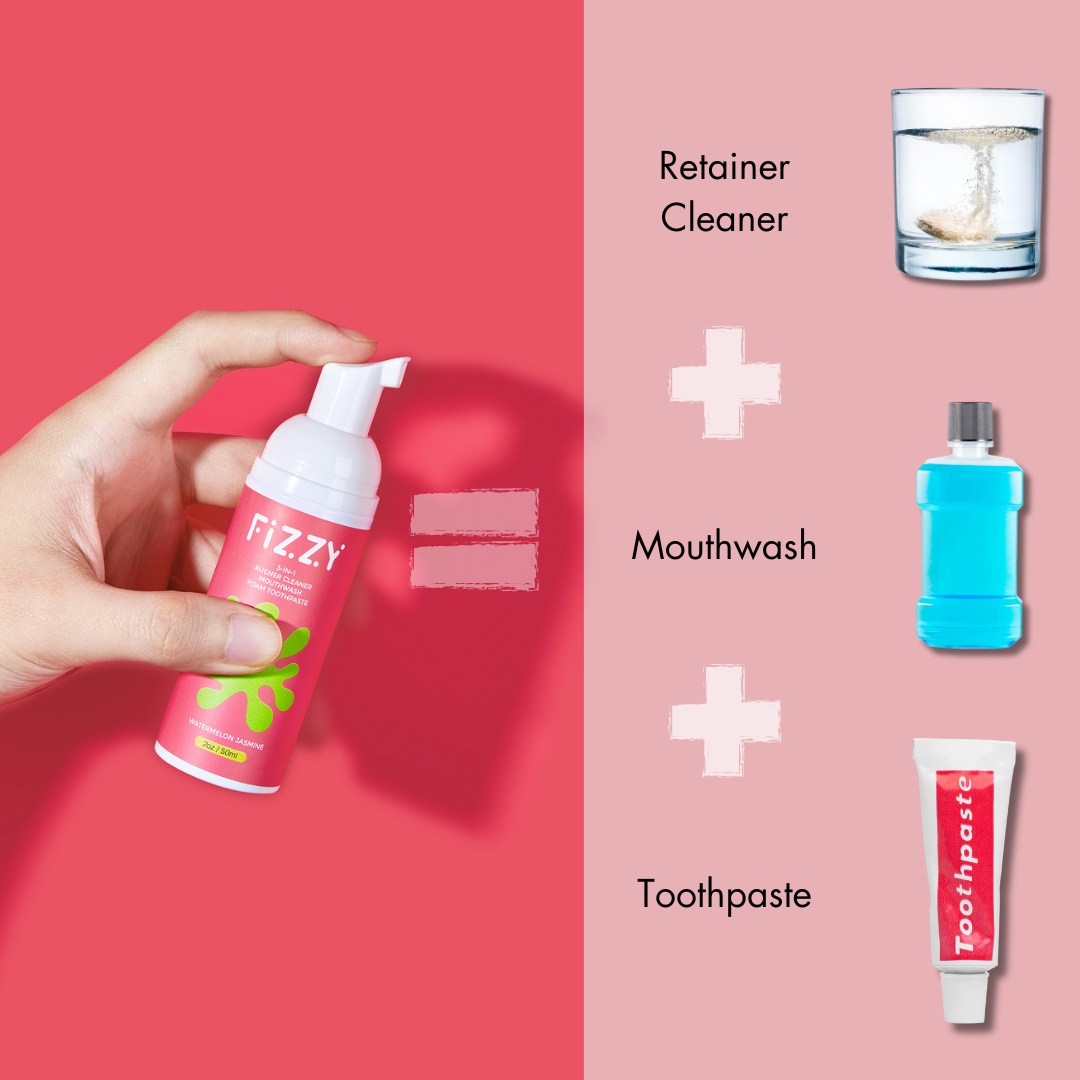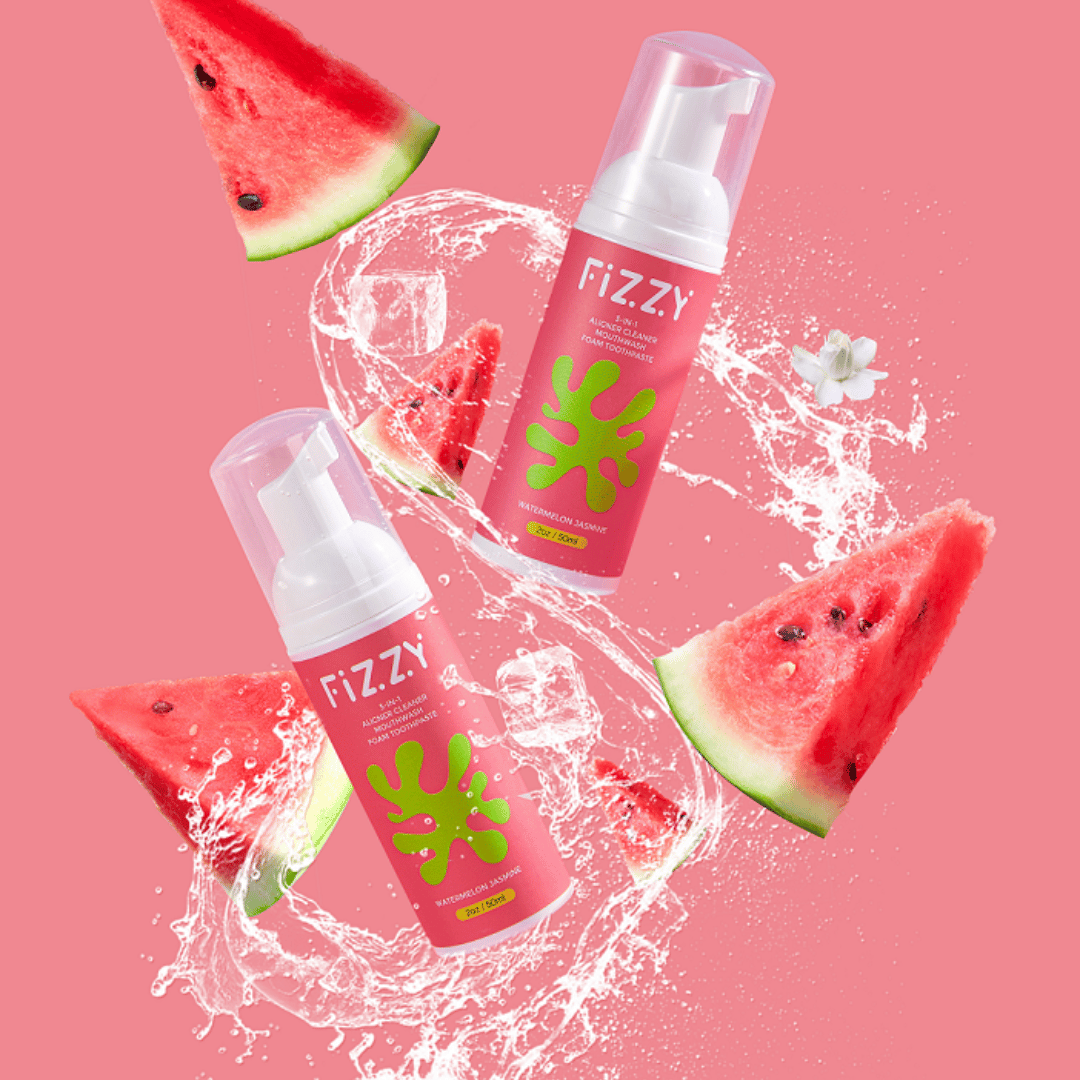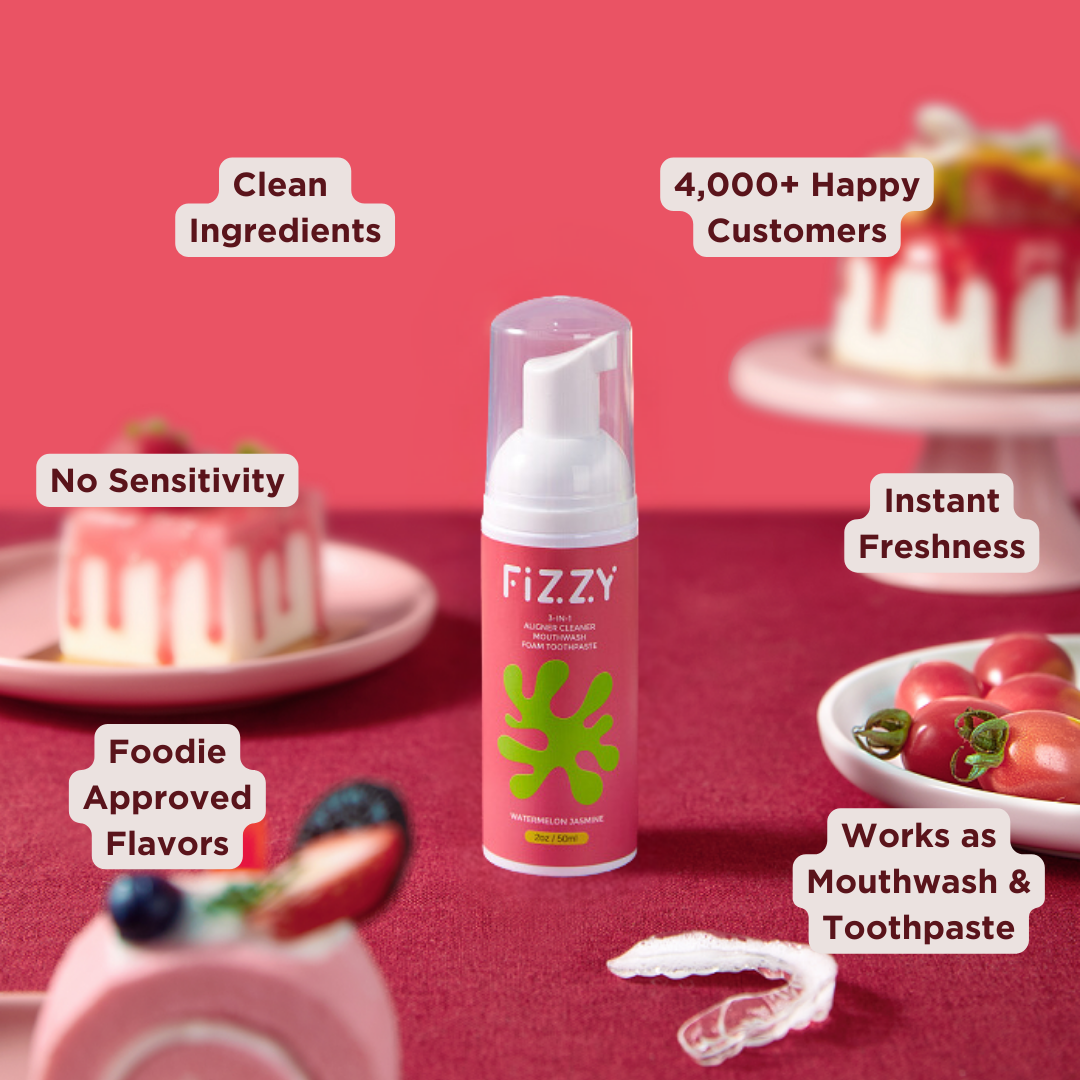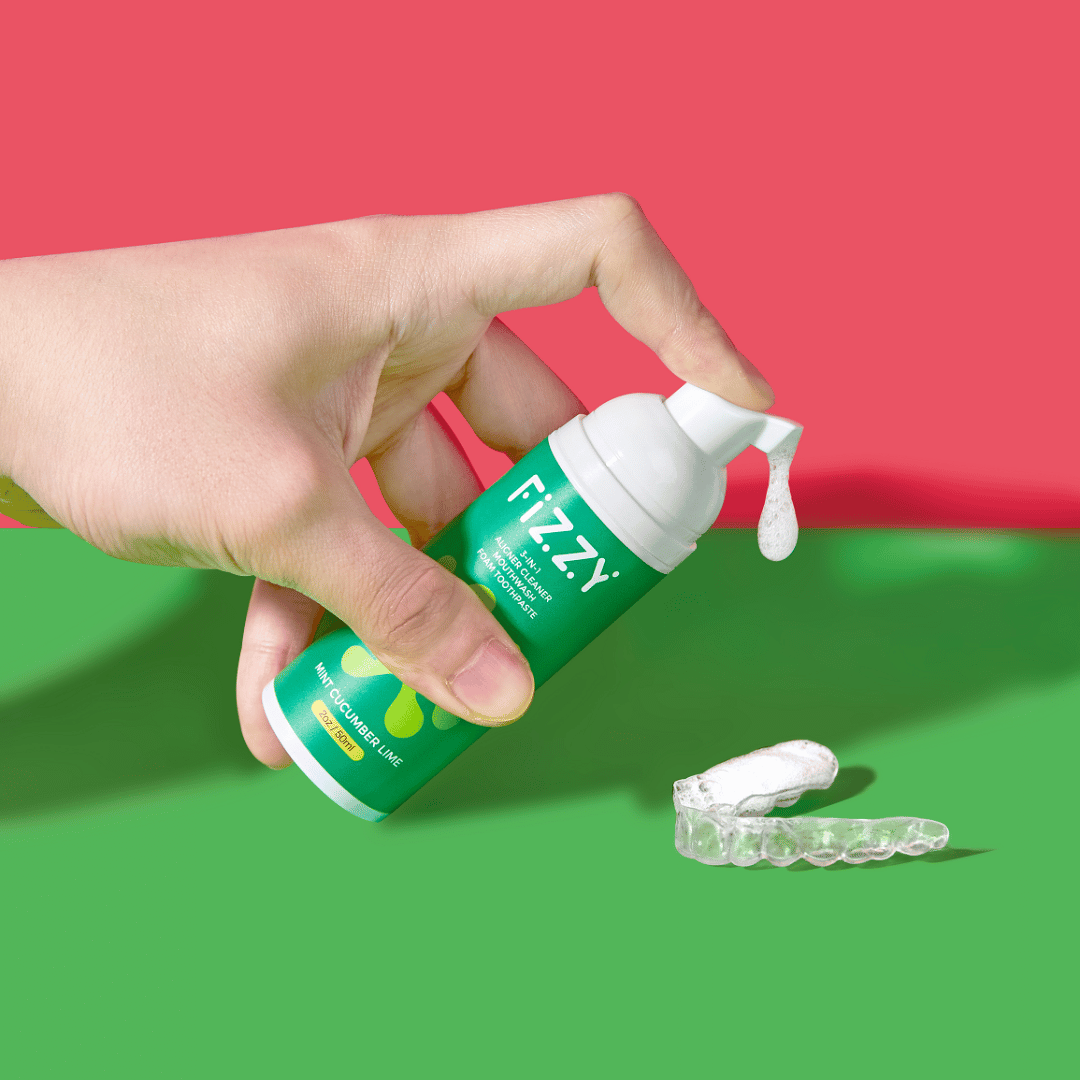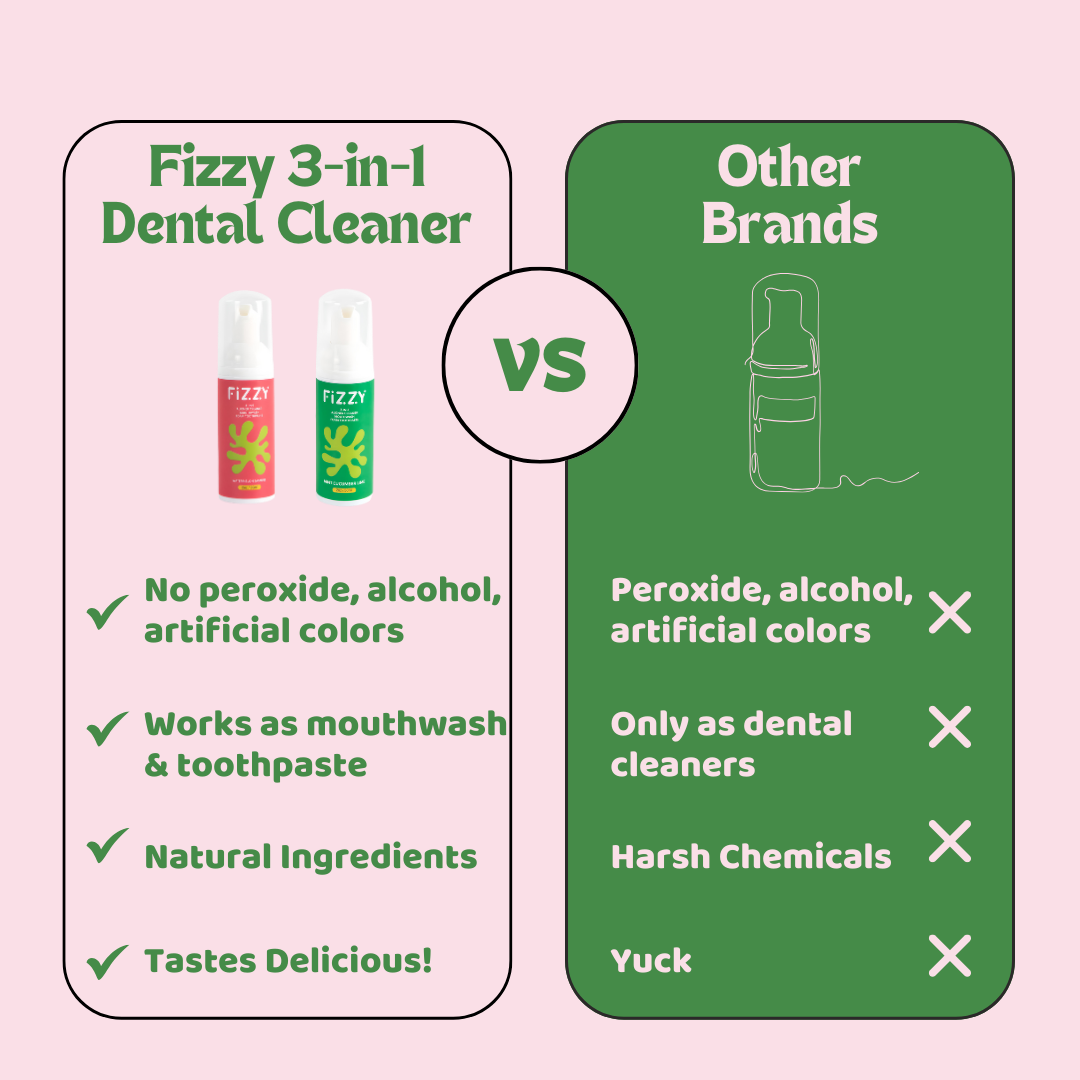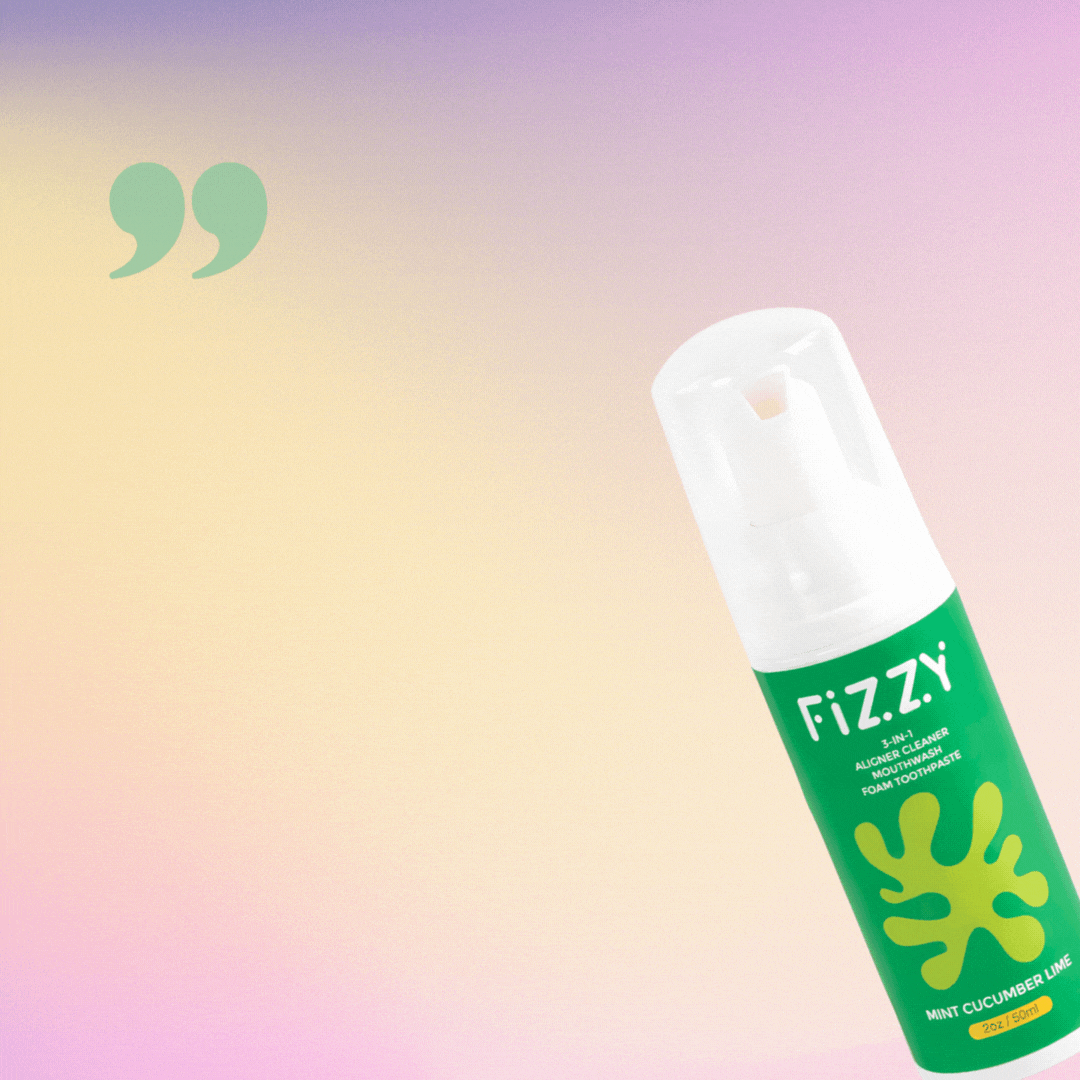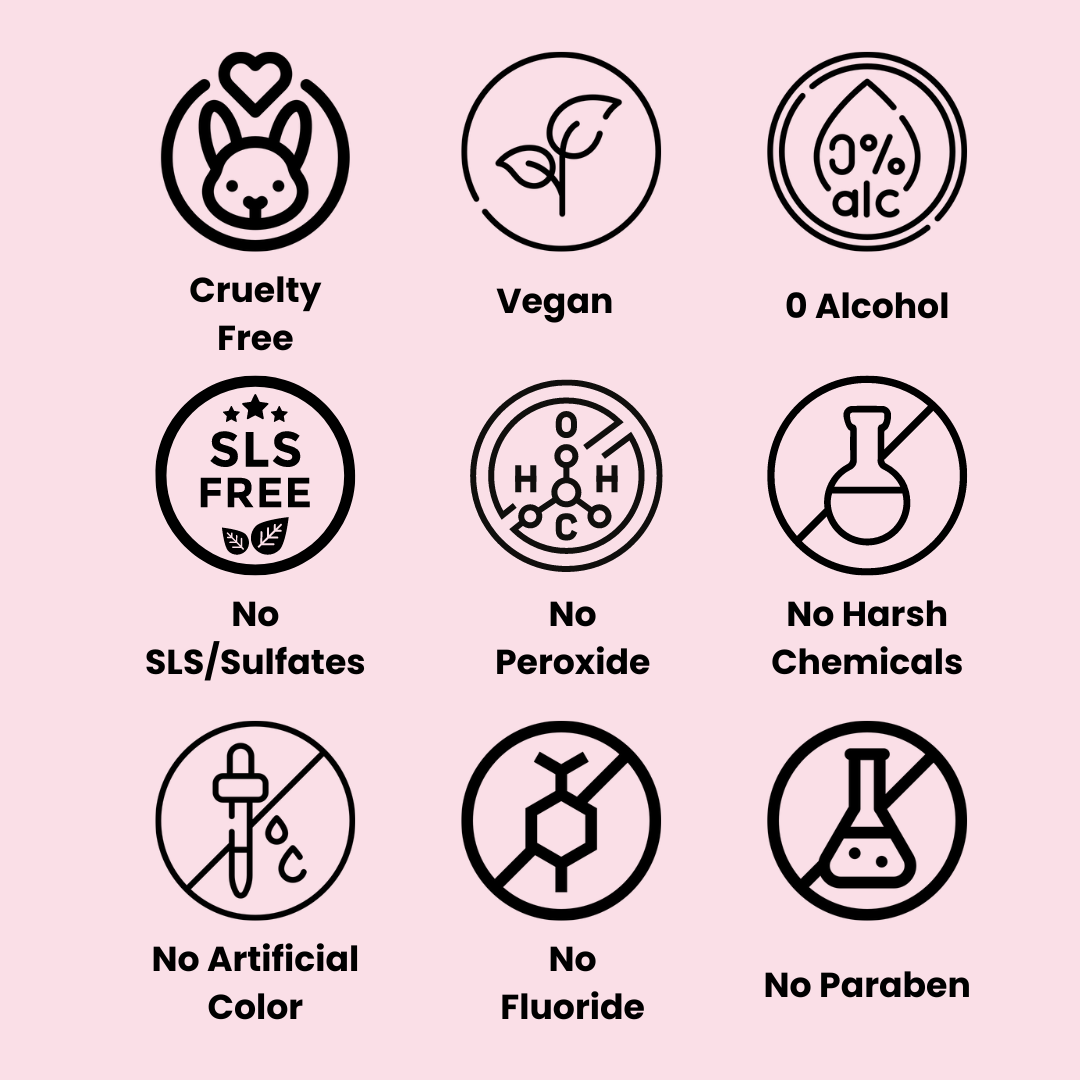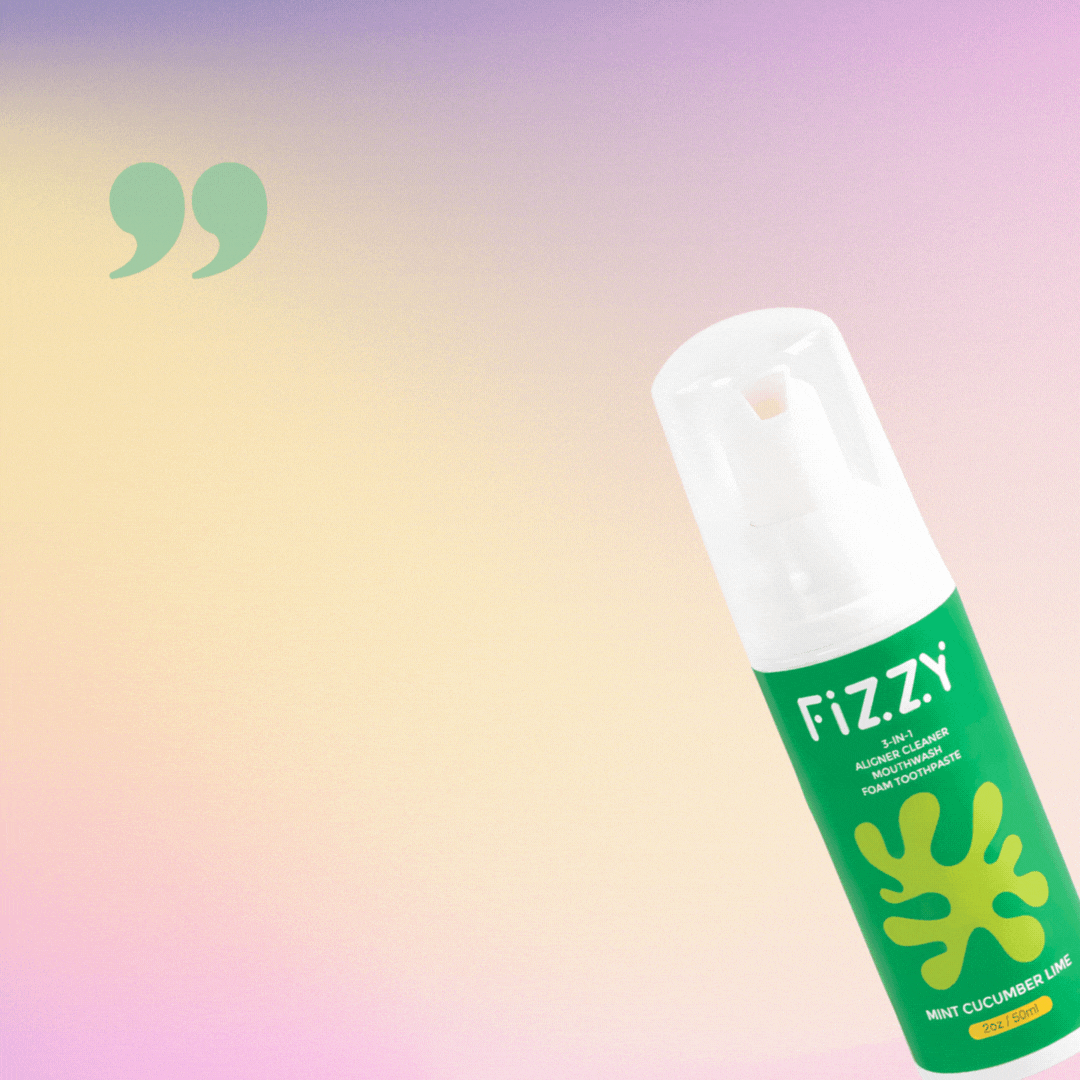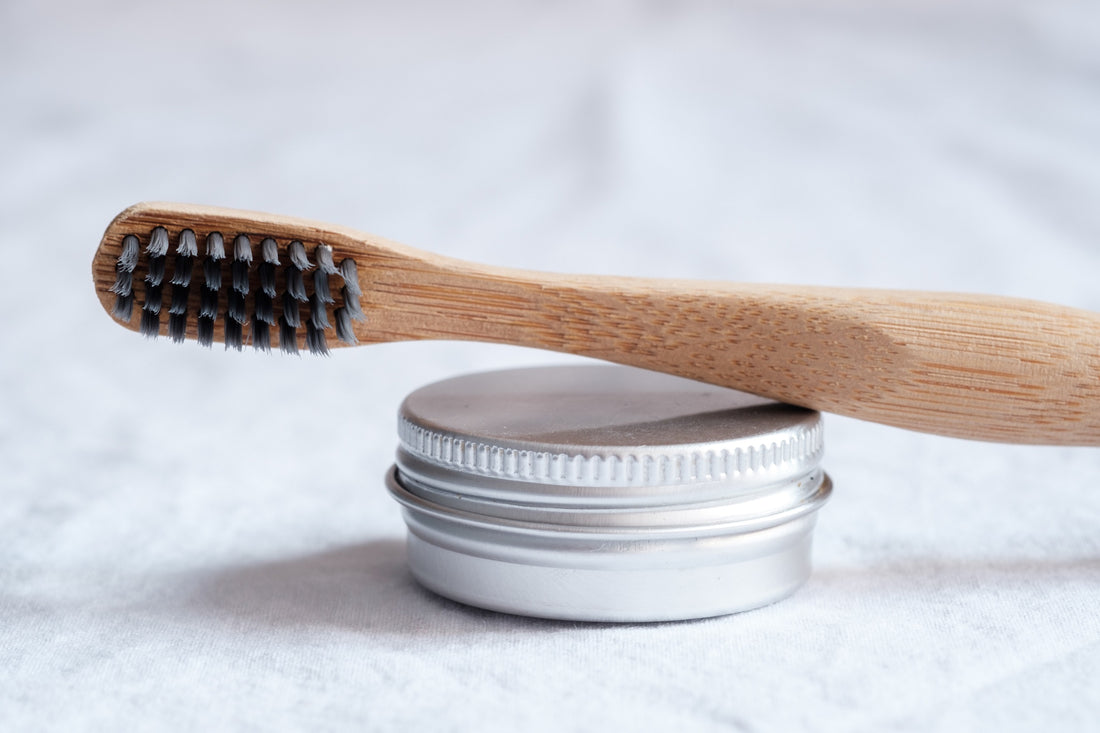
How to Clean Retainers
Inside this Article:
- Why Is It Important to Clean Your Retainer?
- How to Clean Invisalign Trays, Clear Aligners and Retainers
- Effective Cleaning Agents for Invisalign
- Invisalign Crystals
- Denture Tablets
- Fizzy 3-in-1 Aligner Cleaner
- Baking Soda
- Vinegar
- Hydrogen Peroxide
- Don’ts
- How Often Should I Clean My Invisalign?
- Summary
Cleaning your retainers is essential for maintaining optimal oral hygiene and preventing oral health issues. Regular cleaning helps eliminate bacterial and plaque buildup, prevents biofilm formation, reduces bad breath, maintains the integrity of the retainers, prevents staining and discoloration, reduces the risk of oral infections, and avoids cross-contamination. In this article, we’ll introduce Do’s and Don’ts about cleaning your Invisalign and retainers
Why Is It Important to Clean Your Retainer?
Cleaning your retainer is crucial for maintaining good oral hygiene and preventing various oral health issues. Here are several reasons why it's important to clean your retainer regularly:
- Bacterial and plaque buildup: Just like your teeth, retainers can accumulate bacteria and plaque if not cleaned properly. Bacteria in your mouth can multiply on the retainer's surface, leading to oral health problems, bad breath, and potential infections. Regular cleaning helps remove these harmful microorganisms.
- Biofilm buildup: biofilm can develop on the aligner surface when it comes into contact with oral fluids, saliva, and the natural bacteria present in the mouth. When wearing Invisalign aligners, the aligner trays create a snug fit against the teeth, providing a moist and warm environment that can promote the growth of bacteria. Over time, these bacteria can form a biofilm on the aligner surface, which can lead to various oral health issues if not properly managed. Biofilms on Invisalign aligners can contribute to problems such as bad breath, plaque accumulation, tooth decay, gum inflammation, and potential oral infections. Therefore, it is important to regularly clean and maintain the cleanliness of the aligners to prevent the buildup of biofilm and maintain optimal oral hygiene during orthodontic treatment.
- Preventing bad breath: Bacteria and food particles trapped on the retainer can contribute to bad breath. Cleaning your retainer helps eliminate these sources of odor-causing bacteria, keeping your breath fresh.
- Maintaining retainer integrity: Cleaning your retainer properly can help prevent the accumulation of plaque and tartar, which can cause damage to the retainer material over time. By keeping your retainer clean, you can help extend its lifespan and avoid the need for premature replacement.
- Preventing staining and discoloration: Certain foods, beverages, and habits like smoking can stain and discolor your retainer. Regular cleaning can help remove these stains and prevent long-term discoloration, keeping your retainer looking clean and presentable.
- Reducing the risk of oral infections: Unclean retainers can harbor harmful bacteria, increasing the risk of oral infections such as gingivitis or oral thrush. Proper cleaning reduces the chance of these infections, promoting overall oral health.
- Avoiding cross-contamination: If you don't clean your retainer regularly, it can become a breeding ground for bacteria and other microorganisms. When you wear your retainer again, these pathogens can be reintroduced into your mouth, potentially leading to infections or other oral health issues.
How to Clean Invisalign Trays, Clear Aligners and Retainers
- Rinse: Whenever you remove your aligners, rinse them with lukewarm water to remove saliva and any loose debris. Avoid using hot water, as it can distort the shape of the aligners.
- Use a gentle cleanser: You can use a mild, clear, and unscented antibacterial soap, Invisalign cleaners or specialized Invisalign cleaning crystals. Avoid using colored or scented soaps, as they may leave residue on the aligners. Apply a small amount of soap to your fingers or a soft toothbrush.
- Gently brush: Use a soft-bristled toothbrush or the provided Invisalign cleaning brush to gently brush the aligners. Brush both the inside and outside surfaces, as well as the chewing surfaces. Be thorough but gentle to avoid damaging the aligners.
- Rinse again: After brushing, rinse the aligners thoroughly to remove any soap residue. Use lukewarm water for rinsing.
- Soak with cleaning crystals (optional): If you prefer using cleaning crystals, follow the instructions provided. Generally, you'll dissolve the crystals in lukewarm water and soak the aligners for the recommended duration (usually 15-20 minutes). Then, remove the aligners and rinse them thoroughly with water.
- Keep them hydrated: When you're not wearing your aligners, store them in a clean and dry container. You can use the case provided by Invisalign or a denture cleaning container. Keeping them hydrated prevents them from drying out and becoming brittle.
- Clean your teeth before wearing aligners: It's crucial to brush and floss your teeth thoroughly before wearing your aligners. This helps prevent food particles and plaque from getting trapped between your teeth and the aligners.
Effective Cleaning Agents for Invisalign
Invisalign Crystals
Invisalign also offers their own specialized cleaning crystals that are specifically formulated for cleaning aligners. These crystals are dissolved in water, and you soak your aligners in the solution for the recommended amount of time. Follow the instructions provided by Invisalign for the proper usage of their cleaning crystals.
Denture Tablets
Some orthodontists recommend using denture cleaner tablets or solutions to clean Invisalign aligners. Dissolve the denture cleaner in water as instructed and soak the aligners for the recommended duration. Make sure to rinse them thoroughly with water before putting them back in your mouth.
Fizzy 3-in-1 Aligner Cleaner
Fizzy 3-in-1 aligner cleaner, mouthwash and foam toothpaste is a great option to clean your Invisalign trays and your teeth with great package. The mild cleaning agent in the foam helps to remove any lingering particles from your aligners. It also contains ingredients that can help to freshen your breath and kill bacteria that can cause bad breath. In addition to cleaning your aligners, the mouthwash can also help to remove any stains or discoloration caused by food on your teeth.
Baking Soda
Baking soda is generally considered safe to use for cleaning Invisalign aligners but it may not be as effective as specialized cleaning products for removing tough stains or deep cleaning. It can help remove stains, neutralize odors, and provide a gentle cleaning effect. Here's how you can use baking soda to clean your aligners:
- Create a baking soda paste: Mix a small amount of baking soda with water to create a paste. The consistency should be thick enough to spread easily but not overly watery.
- Gently brush the aligners: Apply the baking soda paste to a soft-bristled toothbrush or a dedicated toothbrush specifically for cleaning aligners. Gently brush the aligners, covering all surfaces, including the inside and outside.
- Rinse thoroughly: After brushing with the baking soda paste, rinse the aligners thoroughly with water to remove any residue. Ensure that no baking soda particles remain on the aligners before putting them back in your mouth.
- Avoid excessive scrubbing: While baking soda is generally gentle, avoid scrubbing the aligners too vigorously to prevent potential damage to the aligner material.
If your aligners require more intensive cleaning, consider using specialized aligner cleaning products or consult with your orthodontist for further guidance.
Vinegar
It is generally NOT recommended to use vinegar to clean Invisalign aligners. While vinegar has cleaning properties and can be effective for certain purposes, it is not ideal for cleaning aligners due to the following reasons:
- Acidic nature: Vinegar is acidic, and prolonged exposure to acid can potentially damage the aligner material. It may cause the aligners to become discolored, warped, or weakened, affecting their functionality and longevity.
- Unpleasant taste and odor: Vinegar has a strong smell and taste that may linger on the aligners even after rinsing. This can be unpleasant and affect your overall wearing experience.
- Incomplete disinfection: While vinegar has some antimicrobial properties, it may not be as effective as other specialized cleaning agents in thoroughly disinfecting the aligners. It's important to prioritize effective cleaning and disinfection to maintain oral hygiene during your orthodontic treatment.
Hydrogen Peroxide
Hydrogen peroxide can be used to clean Invisalign aligners, but it should be used with caution and in moderation. Here are some important considerations:
- Dilute properly: If you choose to use hydrogen peroxide, it's essential to dilute it with water before using it to clean your aligners. A common recommendation is to mix one part hydrogen peroxide with three parts water. This helps reduce its concentration and minimize the risk of any adverse effects.
- Limit exposure time: It's important to limit the exposure time of your aligners to hydrogen peroxide. Extended exposure to hydrogen peroxide can potentially weaken or damage the aligner material. Generally, a brief soak or rinse is sufficient for cleaning purposes. Follow the instructions provided by your orthodontist or Invisalign for the recommended duration.
- Rinse thoroughly: After using hydrogen peroxide to clean your aligners, make sure to rinse them thoroughly with water to remove any residue. This helps ensure that no residual hydrogen peroxide remains on the aligners before you put them back in your mouth.
- Avoid excessive use: While hydrogen peroxide can be effective in removing bacteria and stains, it's important not to use it excessively. Prolonged or frequent use of hydrogen peroxide can potentially cause the aligners to become brittle or degrade over time. It's best to use it sparingly and in accordance with the recommendations provided by your orthodontist or Invisalign.
Don’ts
- Avoid using toothpaste: Toothpaste often contains abrasive substances like silica or baking soda, which are designed to remove stains and plaque from the surfaces of teeth. However, these abrasives can be too harsh for the softer plastic material of the aligners. Over time, using toothpaste on your aligners may create tiny scratches or roughen the surface, making them more prone to collecting bacteria, staining, and compromising their transparency.
Toothpaste can also leave residue on the aligners, which can be difficult to completely rinse off. This residue can potentially cause an unpleasant taste or odor when you wear the aligners in your mouth.
- Avoid using mouthwash:
Many types of mouthwash contain alcohol, which can have detrimental effects on the plastic material of the aligners. Alcohol has the potential to weaken or degrade the aligners over time, affecting their shape and function.
- Avoid using hot water. Invisalign aligners are made from a thermoplastic material that is designed to be worn snugly on your teeth. Exposing them to hot water can soften the material and distort their shape, making them less effective in straightening your teeth. Additionally, hot water can also damage the aligners' transparency and clarity, making them appear cloudy or discolored. To ensure the longevity and effectiveness of your Invisalign aligners, it's best to stick to lukewarm or room temperature water when cleaning them.
- Don't use sharp or abrasive tools: Avoid using sharp or abrasive tools, such as hard-bristled toothbrushes or metal objects, to clean your aligners. These can scratch or damage the aligners' surface.
- Scratches and damage: Invisalign aligners are made from a clear thermoplastic material, which can be susceptible to scratches or damage from sharp or abrasive tools. Scratches on the surface of the aligners can compromise their aesthetics and make them more prone to staining or bacterial buildup.
- Surface roughness: Abrasive tools, such as hard-bristled toothbrushes or metal objects, can create roughness on the surface of the aligners. This roughness can make it easier for bacteria, plaque, or food particles to adhere to the aligners, leading to hygiene issues.
- Material integrity: The aligners are designed to be flexible and durable to withstand the forces of orthodontic treatment. However, using sharp or abrasive tools can potentially weaken or compromise the integrity of the aligner material, reducing its effectiveness in properly aligning your teeth.
- Don't use colored or scented soaps: Colored or scented soaps may leave residue on the aligners and affect their appearance or taste. Stick to mild, clear, and unscented antibacterial soaps or specialized cleaning crystals for cleaning purposes.
- Residue: Colored soaps may leave behind pigments or dyes on the aligners, which can discolor or stain them. Scented soaps can also leave behind fragrance residues, which may alter the taste or smell of the aligners.
- Clarity: Invisalign aligners are designed to be virtually invisible, and any residue from colored or scented soaps can compromise their clarity. This can make the aligners appear less transparent or affect their overall aesthetics.
- Potential irritation: Some people may have sensitivities or allergies to the dyes or fragrances present in colored or scented soaps. Direct contact with these additives could potentially cause skin irritation or discomfort in the mouth.
- Don’t eat or drink anything but water with you Invisalign:
- Preventing staining: Certain foods and beverages, especially those with strong pigments like coffee, tea, red wine, and highly colored sauces, can stain or discolor the aligners. By avoiding food and drink intake (except water) while wearing the aligners, you minimize the risk of staining and keep the aligners transparent and discreet.
- Reducing the risk of cavities: When you eat or drink anything other than water, small particles of food and sugary or acidic substances can get trapped between your teeth and the aligners. This can create an environment that promotes the growth of bacteria and increases the risk of tooth decay, cavities, and other oral health issues.
- Maintaining aligner hygiene: Consuming anything other than water can introduce particles or residue into the aligners, making them less hygienic. The aligners need to be kept clean to minimize the growth of bacteria, plaque, and biofilm, which can contribute to bad breath, oral infections, and other dental problems.
How Often Should I Clean My Invisalign?
It is important to clean your Invisalign aligners regularly to maintain their cleanliness and prevent the buildup of bacteria, plaque, and odors. Here's a general guideline on how often you should clean your Invisalign aligners:
- Clean them daily: It is recommended to clean your Invisalign aligners every day, preferably in the morning and before going to bed. This ensures that they are free from any bacteria or debris that may have accumulated during the day or overnight.
- Clean them after meals or snacks: Whenever you eat or drink (except water) while wearing your aligners, it's important to clean them afterward. Food particles can get trapped between the aligners and your teeth, leading to bacterial growth and potential oral health issues. Remove your aligners, rinse them with lukewarm water, and clean them with a mild soap or specialized cleaning crystals before putting them back in your mouth.
Summary
Regular cleaning of Invisalign retainers is crucial for maintaining good oral hygiene and preventing various oral health issues. Failure to clean the retainers properly can lead to bacterial and plaque buildup, biofilm formation, bad breath, staining, and potential oral infections. To clean the retainers effectively, it is recommended to rinse them with lukewarm water, use a mild antibacterial soap or specialized cleaning crystals, gently brush the aligners, and rinse thoroughly. It is important to avoid using toothpaste, mouthwash, hot water, sharp or abrasive tools, and colored or scented soaps. Additionally, refraining from eating or drinking anything other than water while wearing the aligners helps prevent staining, cavities, and maintain aligner hygiene. Invisalign offers specialized cleaning crystals, and denture tablets can also be used for cleaning. While baking soda and hydrogen peroxide can be used, caution should be exercised to avoid damage to the aligners. Cleaning the Invisalign retainers regularly ensures their longevity, effectiveness, and promotes overall oral health.



